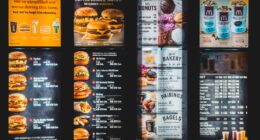As a physical manifestation of an artist’s brand and music, merchandise is important to the music marketing industry. It broadens the artist’s brand beyond their musical output & helps fans connect with their favorite musicians on a deeper level. Shirts, caps, posters, vinyl records, and other unique items like personalized jewelry or limited edition collectibles are just a few examples of the many products that can be considered merchandise. Wearing or displaying these products in public serves as free advertising, gives fans a way to show their support for the artist, and gives artists another source of income.
Key Takeaways
- Merchandise plays a crucial role in music marketing by serving as a tangible representation of an artist’s brand and music.
- Creating a strong brand identity through merchandise helps artists connect with their fans on a deeper level and stand out in a crowded market.
- Leveraging merchandise for music promotion can help increase visibility, reach new audiences, and create buzz around new releases or tours.
- Building fan engagement and loyalty with merchandise can lead to long-term relationships and repeat purchases, as well as word-of-mouth promotion.
- Maximizing revenue streams with strategic merchandise involves thoughtful product development, pricing, and distribution to capitalize on fan demand and market trends.
This is especially crucial now that the main way that people listen to music is through streaming services. Moreover, merchandise helps fans feel more connected to one another. A fan’s sense of community and connection to other fans is fostered when they wear or display an artist’s merchandise as a symbol of their support for the artist and their music.
Establishing a devoted fan base that follows an artist throughout their career can be greatly aided by this community-building component. Artists can also express their creativity through merchandise in ways other than just music. Their artistic vision can be showcased on it, & they can use it to create limited edition items that are unique & appeal to their fan base.
Through the strategic use of merchandise, artists can raise awareness of their work, improve brand awareness, make extra money, & fortify their bonds with their fan base. In light of this, memorabilia continues to be an essential instrument in the music industry, helping to advance the careers of artists & encourage closer ties between them & their fans. Graphic Design and Brand Coherence. To establish their brand identity, a musician renowned for their daring and edgy music, for instance, might decide to produce merchandise with eye-catching images & unique designs.
Conversely, a musician whose music is recognized for being reflective and poignant might choose more simple, subtle designs that encapsulate their brand. Superiority & Artistry. The merchandise’s quality is just as important in defining the brand identity as its visual design.
Not only do well-made products enhance an artist’s brand, but they also help fans become more dependable and devoted. Artists can leave a lasting impression on their fan base and strengthen their brand identity by producing merchandise that is both beautifully made & visually appealing. exclusivity as well as prestige. Also, a feeling of prestige and desirability surrounding the artist’s brand can be developed through the exclusivity of some merchandise items. One-of-a-kind or limited edition products can instill in fans a sense of urgency & excitement that encourages deeper engagement with the artist’s brand and music.
Merchandise is a useful instrument for promoting music, giving artists a platform beyond their single releases. Through the thoughtful integration of merchandise into their marketing campaigns, musicians can establish supplementary channels for fans to interact with their music and brand. To encourage fans to buy tangible goods in addition to digital music releases, artists can, for instance, include merchandise in pre-order or album release bundles. In addition to increasing sales, this gives fans a more engaging and unforgettable experience, which fortifies their bond with the musician’s music. Moreover, artists can use merchandise as a means of promoting future tours and live performances.
Artists have the ability to create excitement & anticipation for their live events by designing limited edition items or merchandise specifically for tours. Through word-of-mouth advertising and promotion, fans who purchase tour merchandise become walking billboards for the upcoming performances. Also, merchandise can be used as a marketing tool at live events, giving attendees a way to remember their concert experience and stay in touch with the performer’s brand after the show.
Today’s digital landscape sees merchandise as a powerful tool for online marketing, & social media is a vital component of music promotion. In order to create visually striking content for social media posts that draw in fans & prospective new followers, artists can utilize visually appealing merchandise. Through innovative merchandise display, musicians can generate buzz about their brand and music and increase social media engagement. In general, merchandise is a useful instrument for promoting music, giving artists a chance to reach a wider audience & establish more points of contact with fans than just through their album releases.
By giving fans concrete means of interacting with their favorite musicians, merchandise plays a critical role in increasing fan engagement and loyalty. Along with demonstrating their support, fans who buy and wear an artist’s merchandise also act as brand ambassadors. Fans feel more pride and ownership as a result, which deepens their emotional bond with the musician’s music and brand as a whole. Also, fans may become more deeply involved with the artist’s brand in order to obtain these unique products if they perceive exclusive or limited edition merchandise as desirable and exclusive. Also, artists may use merchandise as a means of honoring and recognizing their most devoted followers. Artists can express gratitude to their most devoted fans and solidify their relationship with them by providing exclusive merchandise or special benefits to fan club members or ardent supporters.
This promotes continued support and devotion to the musician’s music career in addition to creating a sense of community among fans. Also, artists can use merchandise to give fans unique experiences—like meet-and-greets or VIP packages connected to particular merchandise items—that will stick with them. Building fan loyalty & engagement in the competitive modern music landscape is more crucial than ever, & merchandise is a potent tool for accomplishing this. Artists may cultivate a devoted following that will follow them throughout their careers by giving fans concrete ways to engage with their brand and music. By giving fans concrete means of interacting with their favorite musicians, merchandise, in general, plays a critical role in fostering fan engagement & loyalty.
For artists, merchandise represents a substantial source of income that extends beyond the sales of their music and live performances. Artists can optimize their revenue streams & establish enduring revenue streams to bolster their music careers through the strategic design and marketing of merchandise. Artists have a variety of options for making money from merchandise sales, ranging from high-margin products like apparel and accessories to limited edition collectibles or specialty items.
Making limited-edition or exclusive products that excite fans and generate demand is a smart way to maximize merchandise revenue streams. Artists can generate a sense of urgency and desirability that boosts sales & revenue by providing unique products that are only offered for a short period of time or in limited quantities. Artists can also use merchandise as a component of packaged offerings, like pairing physical goods with digital music releases or creating exclusive bundles associated with concerts or album releases. In order to produce co-branded goods that appeal to a larger market, artists should also consider collaborating with other designers or brands. Through joint ventures with well-known companies or designers, musicians can access untapped markets and attract undiscovered fans through their collaborative merchandise offerings.
This broadens the artist’s audience and generates more income through partnership or licensing arrangements. Ultimately, an artist’s total revenue streams can be greatly impacted by strategic merchandise planning and marketing, giving them stable sources of income to support their musical careers. Linking Up with Similar-Minded Companies.
Assembling a coalition of businesses that share the artist’s brand’s values or aesthetics is a successful approach to working with powerful brands. Artists can collaborate with companies that have a strong cultural connection or resonance with their fan base to produce co-branded merchandise that appeals to fans and feels genuine. Through partnerships with reputable & powerful brands, this not only boosts sales but also enhances the artist’s overall brand image. Gaining Entry into Novel Distribution Channels.
In addition, working with well-known brands can open up new retail and distribution avenues for artists. Artists can increase the availability of their merchandise offerings by collaborating with well-known retailers or e-commerce platforms, who can offer their reach & infrastructure. In addition to raising awareness, this generates new revenue streams through retail partnerships. Increasing Income and Reach. In summary, artists have a stimulating chance to develop merchandise offerings that appeal to a larger market and increase their revenue streams by working with prominent brands. With the music industry changing & artists looking for new ways to interact with fans & make money, merchandise will likely continue to grow and innovate in the field of music marketing and promotion.
Thanks to technological developments and e-commerce platforms, artists are in a better position than before to develop distinctive & customized merchandise offerings that appeal to their fan base. The future of music merchandise is full of opportunities for creative expression and fan interaction, from augmented reality experiences connected to physical products to personalized merchandising through data-driven insights. We may also anticipate seeing a greater focus on eco-friendly and ethically sourced merchandise options from artists as sustainability becomes a more significant factor in a variety of industries, including fashion and retail.
Artists can connect their merchandise offerings with consumer values of social responsibility and sustainability by incorporating eco-friendly packaging and using sustainable materials in product design. Also, we should anticipate greater integration between live experiences and merchandise offerings as live events continue to be vital to an artist’s career. Artists might think of creative ways to connect limited-edition merchandise to live events or design immersive experiences that go beyond a simple musical performance.
All things considered, as musicians look for new ways to interact with fans and increase income through intriguing merchandise offerings, the future of merchandise in music marketing and promotion is poised for continued innovation across technology, sustainability, live experiences, and more.
FAQs
What is the strategic use of merchandise in music marketing?
The strategic use of merchandise in music marketing involves creating and selling branded products such as t-shirts, hats, and other items to promote an artist or band and generate additional revenue.
How does merchandise help in promoting music artists?
Merchandise helps in promoting music artists by serving as a tangible representation of their brand, creating a sense of community among fans, and providing additional exposure through the use of branded items.
What are the benefits of using merchandise in music marketing?
The benefits of using merchandise in music marketing include generating additional revenue, increasing brand visibility, creating a stronger connection with fans, and providing a way for fans to show their support for the artist or band.
How can merchandise be strategically used to enhance a music marketing campaign?
Merchandise can be strategically used to enhance a music marketing campaign by aligning the products with the artist’s brand, creating limited edition or exclusive items, and integrating the merchandise into the overall marketing strategy.
What are some popular types of merchandise used in music marketing?
Some popular types of merchandise used in music marketing include t-shirts, hoodies, hats, posters, vinyl records, CDs, and other branded items such as phone cases, tote bags, and accessories.









